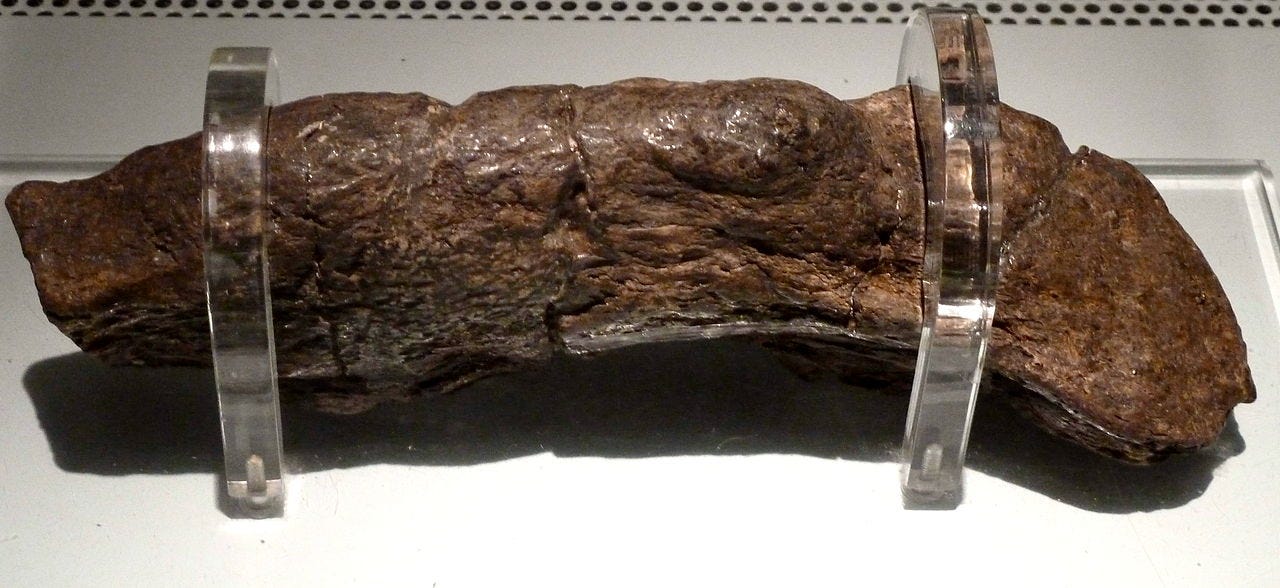With King Charles’ coronation, the world was reintroduced to the Coronation Chair. And the graffiti cut into its ancient wood.
"P. Abbott slept in this chair 5-6 July 1800,” reads one message.
It’s a little dizzying to imagine someone taking out a penknife to leave the equivalent of “Kilroy was here” in a mighty piece of oaken furniture commissioned by King Edward I in 1300. But many people did over the long, long years of the chair’s existence. And that’s not the worst of the indignities it has suffered. The chair was painted and repainted many times. And nailed, repeatedly. What better way to drape the chair with fabric than to nail it to the chair? A little more dramatically, Suffragettes detonated a bomb in Westminster Abbey in 1914, tearing a chunk off the then-600 year old chair.
The Coronation Chair has also been treated to countless restorations and facelifts and it is now given all the protection that modern technology can provide. Don’t even think about carving your initials in it.
But still, it shows its age. And all the ages it has seen. Which is wonderful. Just look at this.
There’s more graffiti on the Coronation Chair than in the average subway tunnel, but unlike subway graffiti, nobody wants the Coronation Chair’s graffiti removed. Because it’s old.
And that’s interesting, isn't it?
If, tomorrow, someone evaded the security at Westminster Abbey and managed to carve a message into the Coronation Chair — you just know it would be as dumb as the act itself — that person would be an idiot, a vandal, a criminal who should spend some time thinking hard in prison. And the damage he did should be removed forthwith.
But what about P. Abbott? Whoever he was — be honest, only a man would do that — he thought it made perfect sense to not only have a snooze in the then-500 year old Coronation Chair of monarchs but the event was so significant it should be etched into the very chair itself. He, too, was an idiot, a vandal, and a criminal. But he was an idiot, vandal, and criminal long ago. And that makes all the difference. The damage he did to the chair isn’t a shame to be erased. It’s a fascinating little detail that adds to the character of the chair.
The Coronation Chair is an extreme case of a general phenomenon: Time transforms how we see objects and events.
The coin in your pocket, minted four years ago, is worth whatever number is printed on it. The equivalent coin minted five hundred years ago is worth far more. Why? Scarcity alone can’t explain it. There are plenty of modern coins minted in small numbers that have little value, while coins from centuries ago that are relatively common are worth more. What matters is time.
Your bathroom tile is worthless. No one values it. Some day you will decide it’s outdated and needs to be torn out and sent to a landfill where it will moulder, unseen and unloved, for millennia.
But if those millennia pass and someone excavates the landfill — what was a dump for us will be an archeological dig for them — that bathroom tile in some future hand will send shivers up the spine of the person holding it. Doubt that? Picture yourself plunging a spade into the ground and coming up with a Roman bathroom tile.
What’s the difference? Time. Let enough time pass and anything can turn into a treasure.
Graffiti is the obvious example. There are countless examples like the graffiti on the Coronation Chair.
But there are many others. My favourite is what is officially known as the “Lloyd’s Bank coprolite.”
Fifty years ago, in York, England, construction began on a new branch of Lloyd’s Bank. Digging unearthed something fascinating.
An enormous turd.
Twenty centimetres long. Five centimetres wide. It was an epic shit.
Today, the turd is under protective glass in a museum.
But it wasn’t size that earned it this honoured place. It was time.
The Lloyd’s Bank coprolite emerged into this world one morning — so I assume — in the 9th century, when York was a Viking settlement. Yes, the Lloyd’s Bank coprolite is fossilized Viking poo.
Now, think about this. One morning, a Scandinavian interloper takes a shit, and today that shit is a treasured museum exhibit the good people of Lloyd’s Bank are proud to share their name with.
How is that possible? Time.
Twelve-hundred years turned that turd from an object of disgust into one so valued that when some dolt dropped it in 2003, breaking it into three pieces, highly trained experts used all their scientific arts to put the damned thing back together. And place it back under protective glass.
Time, baby. It’s goddamn magic.




I wonder if this time magic works primarily when we find no emotional, political of ideological animus inherent in the object. You have written several times about how we deal with monuments (here is another article on this topic which I saw today - https://www.altaonline.com/dispatches/a43829471/gary-kamiya-public-monuments-racial-justice/). If tomorrow someone excavated a site somewhere in Spain or Italy to discover tiles, furniture or other artefacts (or even a turd) belonging to Columbus, I suspect that the response would be more mixed. Some would see all of it valuable because of the time magic, while others would no doubt claim they were not worthy of attention.
Another sad reminder that my BJ40 Land Cruiser which I sold to a kid in Lake Cowichan for $3200 in 1993 is now worth $25,000. It wasn’t a turd.